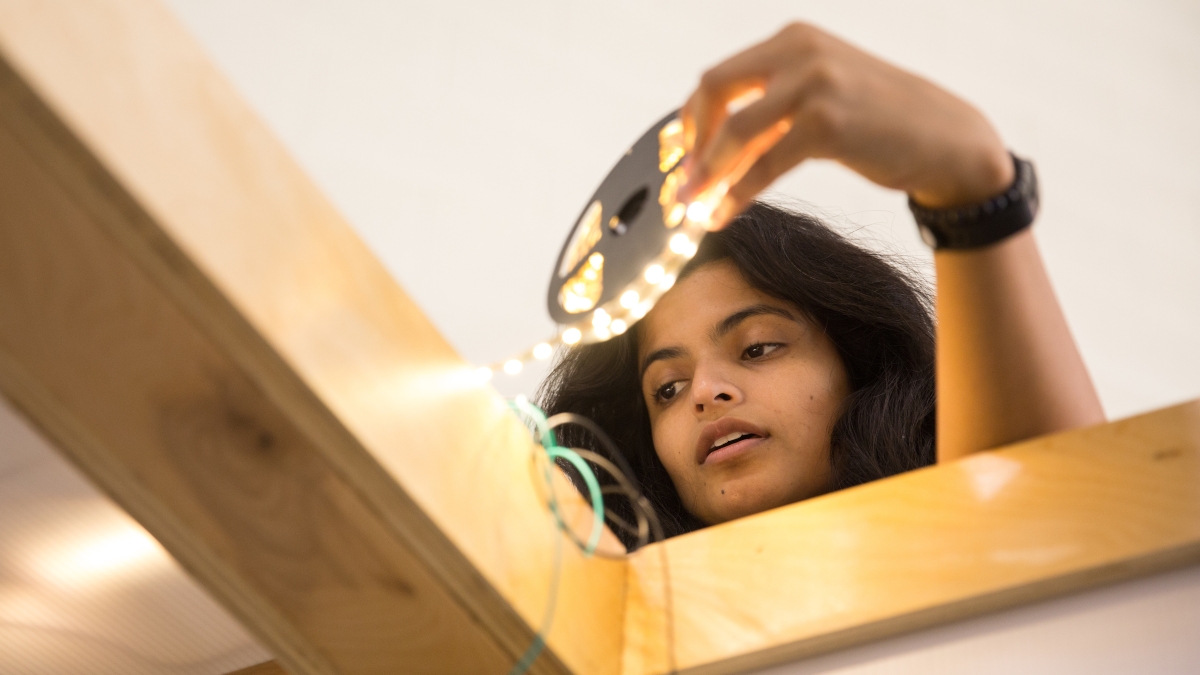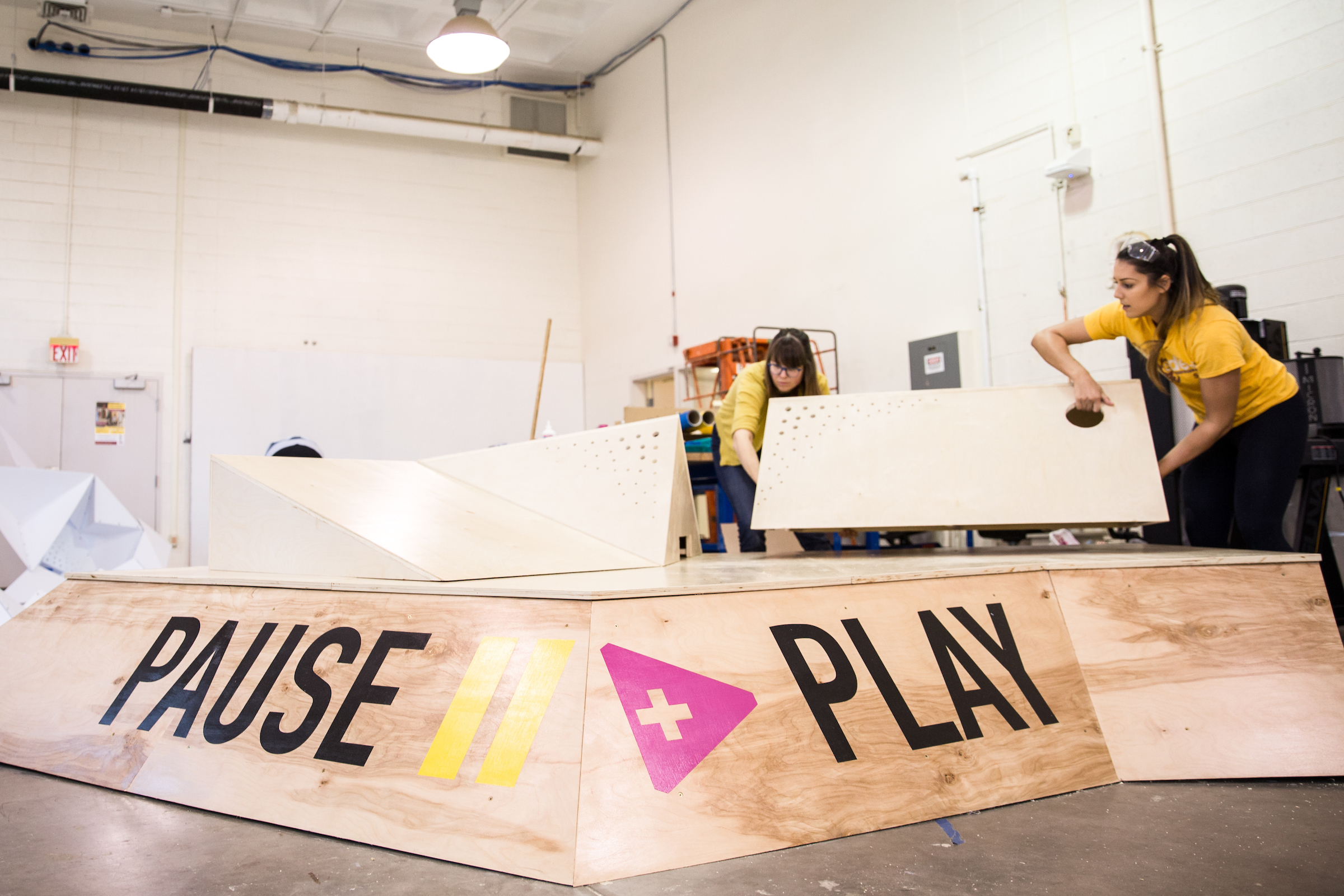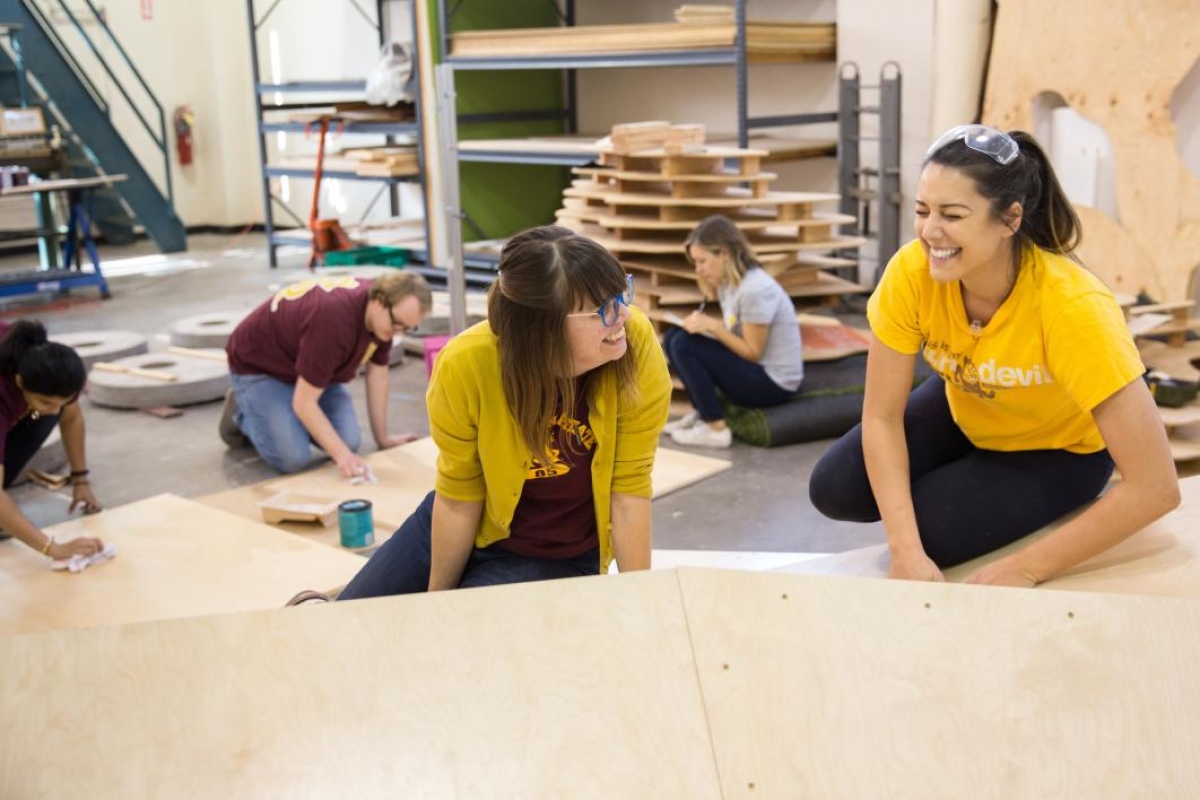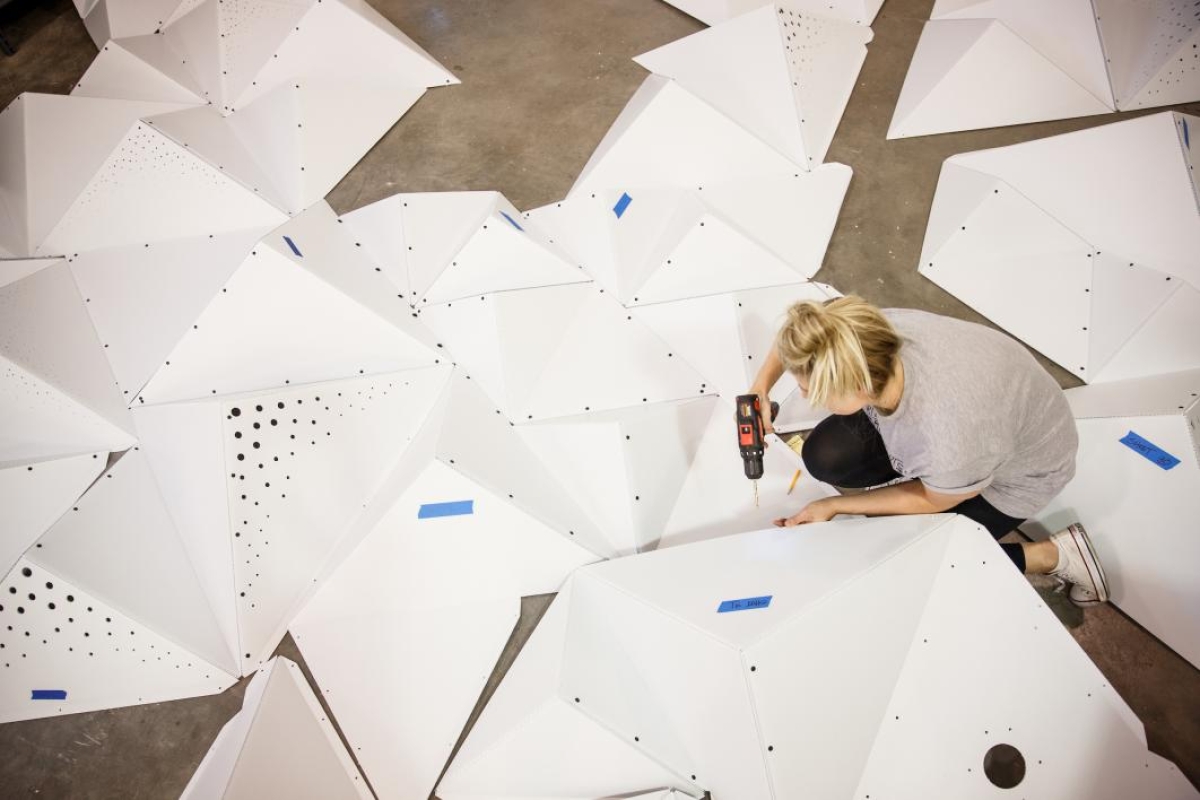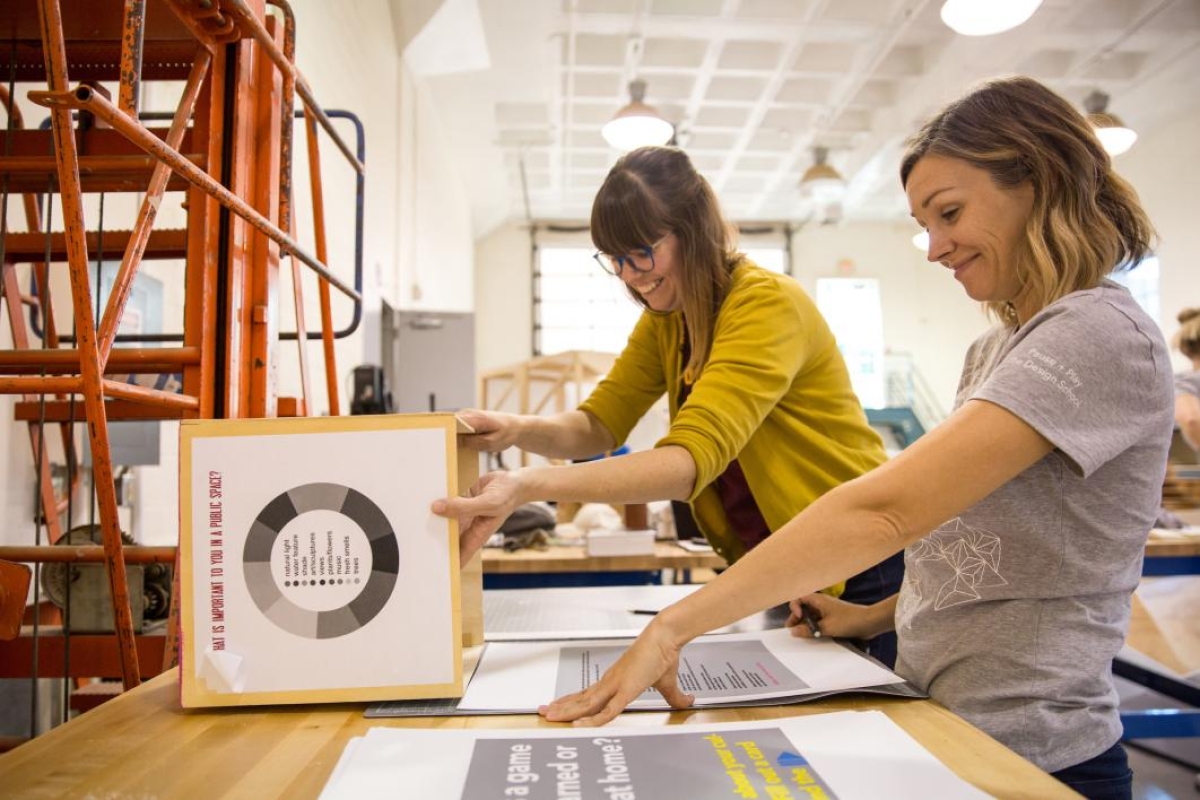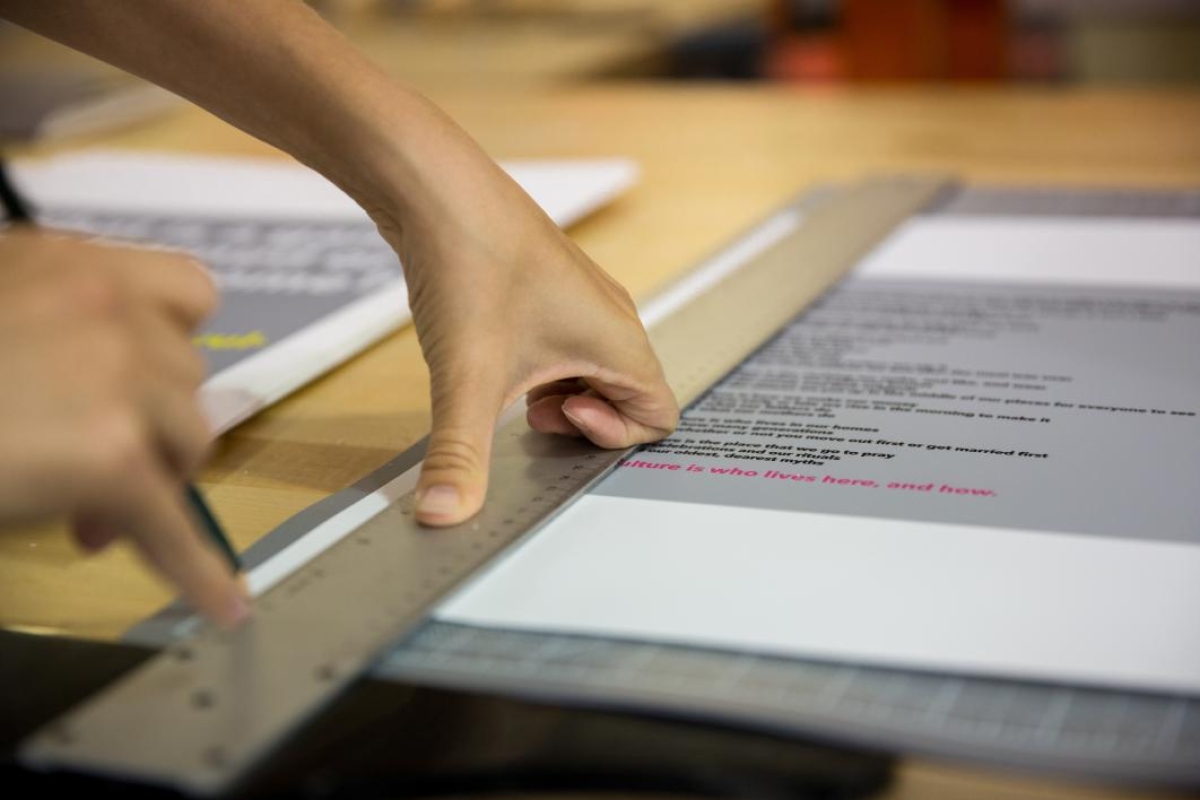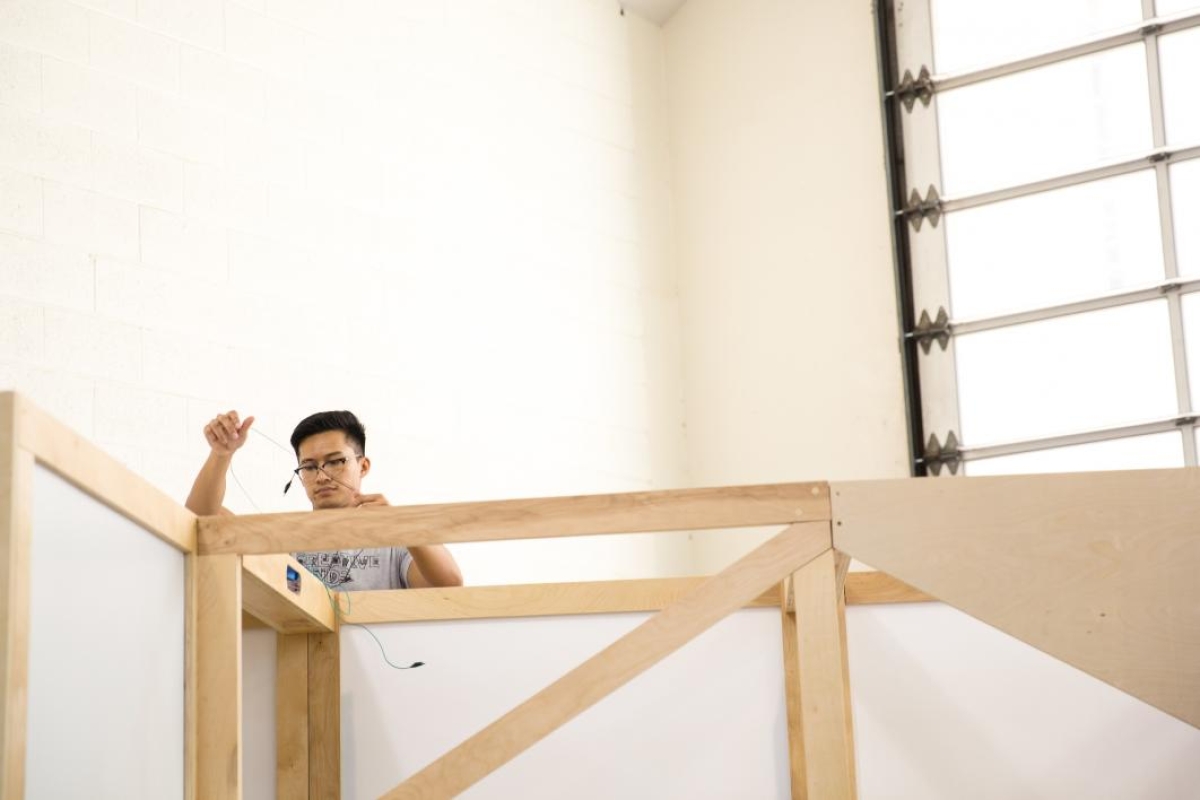What do kids want when they play? A group of interior architecture students at Arizona State University asked 70 sixth-graders, who said they wanted to climb and slide and be immersed in a different world.
And then the ASU students built it.
Their structure, called “Pause + Play,” brings to life the vision of the Mesa schoolchildren and will be part of the free Main Street Prototyping Festival in downtown Mesa on Friday and Saturday.
“The idea of this project was to look at how to establish a dialogue between the community and the profession, and the relationship between culture and play,” said Milagros Zingoni, an architect and the Herberger Institute for Design and the Arts assistant professor who led the class.
The festival, sponsored by the Mesa Arts Center, asked for photographs of finished projects, but Zingoni submitted a proposal to have her ASU students collaborate with the community on an assignment about play.
“Play was a way to find an equalizer. When we play we don’t care about the color of our skin or the shape of our eyes. We all play,” she said.
ASU interior architecture master's students Jen Grysho (left) and Maryam Ali lift the last piece of the bench into place on the "Pause + Play" structure. Photo by Anya Magnuson/ASU Now
Although time was short, Zingoni had several goals in mind for “Pause + Play.”
“I wanted to expose the kids to design thinking and also to the college experience,” she said. “I wanted to expose my students to a design-build experience, and also I wanted social embeddedness.”
The project became a whirlwind for the eight master’s level students in the Advanced Interior Architecture Studio IThe course is part of The Design School in the Herberger Institute for Design and the Arts. course, who did the entire task, from data collection to completion, in two and half months. They began working with the sixth-graders at Porter Elementary School in Mesa in August, asking the kids to interview their parents and grandparents about how they played, and what their favorite play experience is.
“They all wanted a place to climb; they all wanted something in circles for loops,” Zingoni said. “They all wanted a trampoline, and they all wanted a zip line. They wanted this idea of immersion and being in a place where you can be away from reality.”
Then came the design, based on the kids’ responses. There’s an “immersion” section, where you’ll hear recordings of the kids talking about play, a climbing bench and a translucent canopy inspired by origami. Part of “Pause + Play” is an instrument, designed by students in the School of Music, that creates sound when activated.
At the festival, the Porter School students will get to play on the structure, which is made of wood, vinyl, PVC piping and corrugated plastic.
“We needed to be very strategic,” Zingoni said of the design. “Everything had to fit into a U-Haul truck, able to be assembled in eight hours and disassembled in six hours. We couldn’t make holes in any walls or dig a foundation.”
Construction presented several challenges. The concrete footings needed to be deep enough to support the PVC pipes that are the skeleton of the structure, but at that size would have been too heavy for the students to lift. So instead they created several donut-shaped footings that will be stacked.
The ASU students learned a lot more than design, having to code motherboards, wire for sound, pour cement and use power tools. They also had to be liaisons to the school, collaborate with the School of Music students as well as the children, figure out marketing and meet with the festival officials.
Being able to fabricate the project was key, Zingoni said.
“With most design studios, you’re working in the computer and you have all these beautiful projects on the screen. But then you realize, I can’t make this taller than 8 feet because the material doesn’t come taller than 8 feet,” she said.
“My students were able to learn about full-scale details.”
Courtney Davis, a student in the ASU class, said that working with power tools and learning about fabrication was key.
“I think people think interior design is about picking finishes for inside a building, and they don’t think that we can actually design a structure, put it up and get the details right so everything fits together,” she said.
“We came to the shop with our plans thinking, ‘This is how it will go together,’ and the shop guys would say, ‘Well that’s going to fall over.’ So then we learned about the joint that will make it stand up.”
Zingoni said that typically, a prototype is an object that is tested and, if it works, is mass produced.
“But for me, prototype was a way to test a relationship, to leverage the resources of the university with the community, and to be friendly. Because lately, if we don’t agree, we are against each other.”
“Pause + Play” will be among 20 temporary structures at the Main Street Prototyping Festival that are created by artists, architects, designers, students, makers, urban planners and others. The festival, which also will feature artists and musicians, runs from 5 to 10 p.m. Friday and noon to 10 p.m. Saturday at 1 E. Main St., Mesa. Top photo: Master's of interior architecture student Dalal Altassan tries to decide if the lighting for part of the play structure will look better suspended or taped. Photo by Anya Magnuson/ASU Now
More Arts, humanities and education

Honoring innovative practices, impact in the field of American Indian studies
American Indian Studies at Arizona State University will host a panel event to celebrate the release of “From the Skin,” a collection over three years in the making centering stories, theories and…

ASU alum's humanities background led to fulfilling job with the governor's office
As a student, Arizona State University alumna Sambo Dul was a triple major in Spanish, political science and economics. After graduating, she leveraged the skills she cultivated in college —…

ASU English professor directs new Native play 'Antíkoni'
Over the last three years, Madeline Sayet toured the United States to tell her story in the autobiographical solo-performance play “Where We Belong.” Now, the clinical associate professor in…
